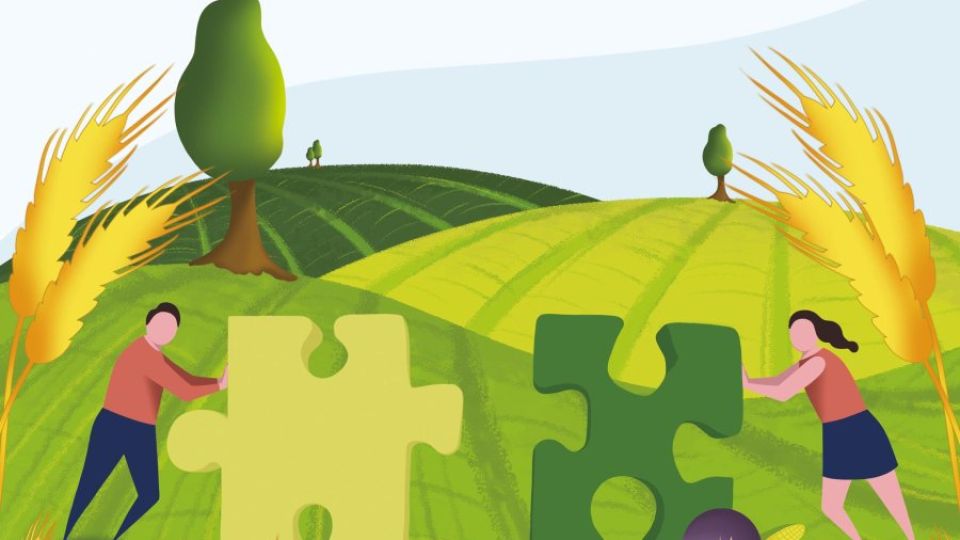June 26, 2023
BEIJING – Global agricultural development and food security have been severely threatened by the COVID-19 pandemic, the Russia-Ukraine conflict, and other challenges. With a combined population of more than 2 billion, China and the Association of Southeast Asian Nations play a crucial role as global food production bases.
Since the beginning of the 21st century, China-ASEAN agricultural cooperation has developed rapidly. The Memorandum of Understanding on Agricultural Cooperation signed by both sides in 2002 marked the beginning of this cooperation.
The Belt and Road Initiative and the construction of “China-ASEAN Community of Shared Destiny” have injected new policy momentum into agricultural cooperation.
During this period, a large number of agricultural technology centers, experimental bases, training centers and technology innovation alliances were started by both sides.
The Joint Statement on China-ASEAN Food Security Cooperation issued in 2022 aims to strengthen technological innovation and application, and increase the output of major crops such as rice, corn and soybeans.
China’s agricultural investment in ASEAN concentrates on the Indochina Peninsula (Vietnam, Laos, Thailand, Cambodia and Myanmar), focusing mainly on the planting industry. However, enterprises involved in agricultural product processing, storage, and transportation are less than expected.
The industry chain is incomplete with low added value, and is vulnerable to external risks. For example, Myanmar is the host country with the most agricultural investment enterprises from China, but these enterprises mainly concentrate on the fruit-planting industry.
Due to the impact of the COVID-19 pandemic and the political instability in Myanmar, along with the short life cycle of products and lack of cold chain logistics, a significant number of enterprises risk going bankrupt.
Therefore, it is necessary to reconstruct the regional agricultural industry chain and supply chain, and enhance the value chain.
ASEAN is the region where China has established the highest number of agricultural investment enterprises, with Myanmar and Laos being among the prominent countries.
These enterprises, especially leading enterprises, can be encouraged to create agricultural industry clusters that cover production, processing, storage, transportation and improvement in the industry chain.
In addition, cooperation between agricultural research institutions and enterprises needs to be strengthened to set up agricultural science and technology workstations in ASEAN to enhance the agricultural value chain.
Currently, China is building a new western land-sea corridor. This strategy will connect China’s central and western region with the Lancang-Mekong region.
This is the core area for agricultural development and food security cooperation between China and ASEAN.
The new western land-sea corridor is conducive to the establishment of an international regional food corridor between the central and western provinces in China and ASEAN countries through border provincial-level regions such as the Guangxi Zhuang autonomous region and Yunnan province.
However, the logistics infrastructure of the new land-sea corridor is not yet perfect.
From a macro perspective, although the China-Laos Railway has been completed and the “China-Laos-Thailand” round-trip train has been successfully operated, a complete railway network between China and ASEAN countries is still lacking, and the railway standard between China and foreign countries has not yet been unified.
A railway network connecting major domestic and foreign nodes is still absent. Thus, the geographical advantage of border provincial-level regions such as Yunnan and Guangxi has not yet been effectively utilized.
From a micro perspective, there are not enough agricultural logistics stations. Especially, cold chain logistics stations and transportation facilities are still lacking and cannot meet the needs of large-scale, high-quality agricultural trade.
Therefore, China and ASEAN countries need to strengthen the construction of agricultural logistics stations, build multi-transportation agricultural logistics stations and bonded logistics zones at major nodes, and build cold chain warehousing and transportation facilities to facilitate the transportation and distribution of agricultural products.
China and ASEAN countries also need to promote the unification of China-Thailand and China-Vietnam railways, start the construction of the Myanmar section of the China-Myanmar Railway, build a railway network along the Yunnan-Guangxi border to form an efficient and convenient railway network connecting major domestic and foreign logistics nodes.
It is worth noting that with the start of the China-Europe Express, especially the convening of China-Central Asia Summit in May 2023, the emergence of Asia-Europe agricultural interconnection is coming, linking the three major granaries: ASEAN, China and Central Asia.
China-ASEAN agricultural development and food cooperation will further connect Asia and Europe, and shape a new pattern of global agricultural development.
Cui Hao is a teacher at the School of Economics and Management at Baoshan University. Zhai Kun is a professor at the School of International Studies and deputy director of the Institute of Area Studies at Peking University. The authors contributed this article to China Watch, a think tank powered by China Daily.
The views do not necessarily reflect those of China Daily.


